Study suggests that between 374 million and 2.1 billion Atlantic surf clams seeds are needed to produce 1 million bushels of market-sized product
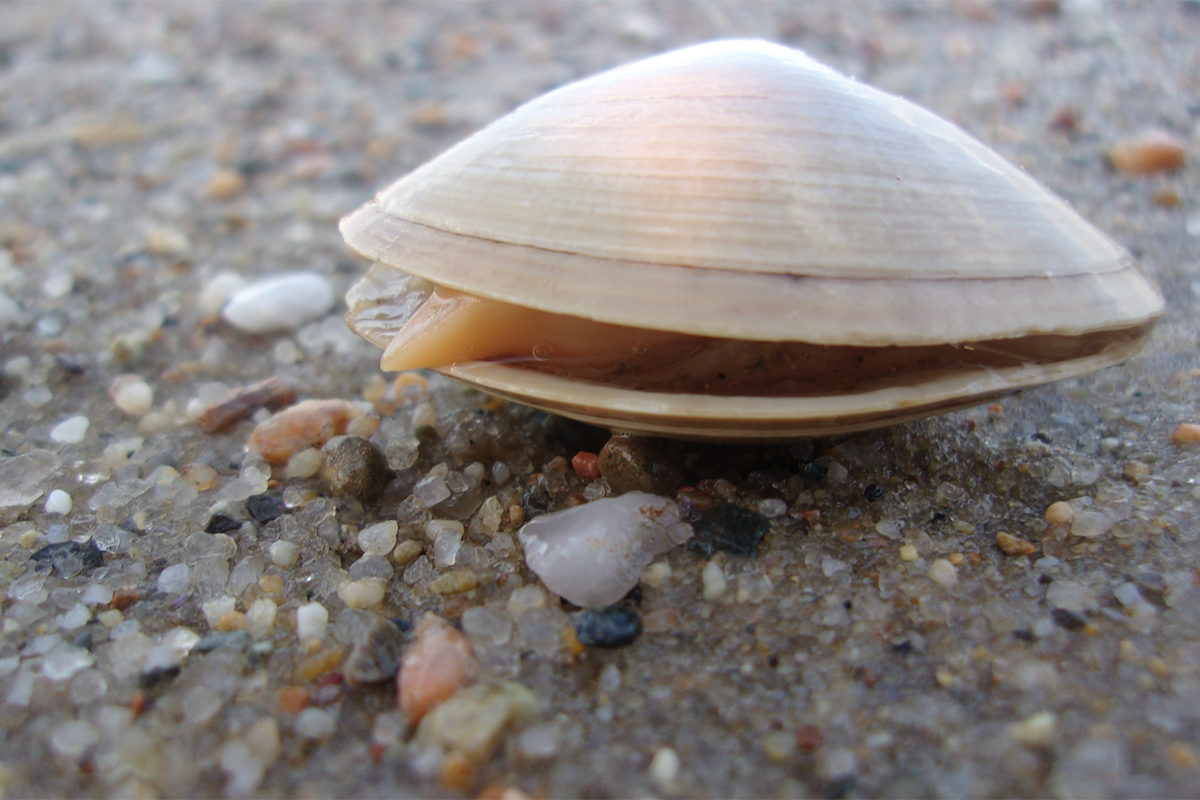
Fishery stock enhancement strategies – also known as restocking for conservation purposes, or sea ranching for economic purposes – have gained interest among U.S. stakeholders as challenges associated with food security, marine habitat degradation and potential job losses increase due to anthropogenic stressors. These enhancement strategies are used broadly across various marine fish and shellfish populations, with the intent to enhance the productivity and management of marine populations by addressing natural or human-induced ecological limitations, such as recruitment and habitat limitations and degraded natural habitats.
The Atlantic surf clam (Spisula solidissima) is considered one of the most important commercial clam species harvested in the United States. It is a large marine bivalve that is distributed from the Gulf of St. Lawrence, Canada to Cape Hatteras, North Carolina; however, the fishery for Atlantic surf clam is based off the Mid-Atlantic coast, where surf clams have historically been most abundant.
According to the 2020 stock assessment, the Atlantic surf clam population is not overfished and overfishing is not occurring. Recent landings in the commercial Atlantic surf clam fishery have averaged around 2 million bushels (1 bushel = 35.24 liters in volume) per year.
This research explored the viability of hatchery-supported stock enhancement of the Atlantic surf clam fishery at a large, fishery-relevant scale. The motivation for this project relates to the anticipated reduction in fishery access to wild Atlantic surf clam stock due to offshore wind development. Although stock enhancement is potentially desirable in that it helps to maintain existing fishing activities and related industries, the necessary scale and associated costs are unknown.
This article – summarized from the original publication (Gilsinan, C.B. et al. 2023. Hatchery capacity needed to support large-scale Atlantic surf clam fishery enhancement. Aqua. Fish & Fisheries 2023; 1–12) – compiles the best available knowledge about hatchery and nursery growth and survival, as well as production costs, to estimate the scale that would be needed to support one million bushels of market-sized Atlantic surf clams per year for fishing by the commercial fishing fleet.
Study setup
This study explores the economic viability of large-scale hatchery production to improve fishery access and potentially offset additional costs, reduced revenues and potential job losses associated with the displacement of the fishing fleet. Reports and primary literature were used to understand the growth and survival of Atlantic surf clams in hatchery and nursery settings to calculate the scale of hatchery efforts needed to support one million bushels of fishery-sized clams (>120 mm). Data on labor, energy, construction and material inputs and costs for hatchery and nursery production were gathered by analyzing available literature and information provided by hatchery managers, researchers and others knowledgeable about shellfish hatchery production. A techno-economic cost model and Monte Carlo analyses were employed to explore average costs and their variability.
For detailed information on the experimental design, data collection and analyses, refer to the original publication.
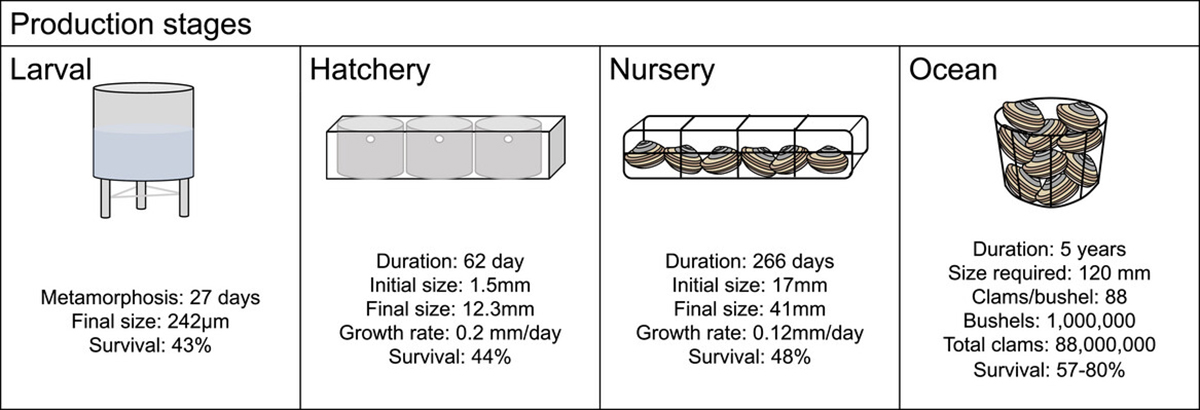
Results and discussion
Results of this study suggest that 374 million to 2.1 billion Atlantic surf clam seeds are needed at the end of the hatchery stage to produce 1 million bushels of market-sized product. Total production costs range from U.S. $3.7 to $15.1 million, including $2.9–$13.3 million in hatchery costs and $800,000–$1.9 million in nursery costs. Under current market conditions, where Atlantic surf clams regularly sell for $14–$17 per bushel, our analysis suggests that hatchery production could be considered a viable fishery enhancement method that supports human access to the fishery, though several additional questions remain.
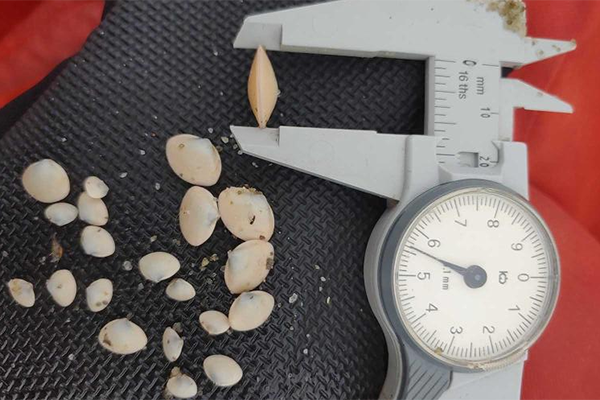
Large-scale hatchery production to support both conservation and commercial objectives has become widespread across marine species and locations. In the United States, hatchery-reared marine and anadromous finfish, crustaceans and mollusks are released into the wild for stock enhancement purposes. Currently, Pacific salmon hatchery releases represent one of the largest fishery stocking programs in the world. In 2021, the commercial salmon fleet in Alaska caught more than $140 million of hatchery-raised salmon, which accounted for 28 percent of total statewide salmon harvests.
Other similar examples include the Japanese scallop fishery in Hokkaido, which is managed through the mass-release of cultured juveniles, removal of predators and rotational fishing efforts (releasing one-year-old juveniles and harvesting the animals three years later) to improve catch consistency after the initial fishery collapsed in 1945 due to overharvesting. These enhancement strategies have resulted in current harvests of ∼300,000 tons annually, compared to previous harvests of 100 tons annually after the stock crash. Similarly, aquaculture and sea-ranching programs in the Bay of Brest in France have provided 55 percent of the total bay scallop landings between 1999 and 2004, thus greatly improving the decimated scallop fishery and enhancing economic sustainability in the region.
The results of this research provide a robust analysis of the primary factors determining the viability of costs for hatchery and nursery production and the survival rates of Atlantic surf clam. However, this study could not be used to determine the viability of large-scale enhancement for other marine species or Atlantic surf clam in a different geographic location. This is due to context-specific differences within varying species and locations, such as survival rates, and limited details on costs and benefits associated with enhancement, such as variable nursery and hatchery costs.
But this research could be extended to look further into other fishing sectors, marine species and geographical locations. Shellfish aquaculture can provide a variety of ecosystem services, such as habitat provisioning, nutrient cycling and sediment stabilization. Advances in the ability to quantify and value these services may increase opportunities associated with green financing and investment.
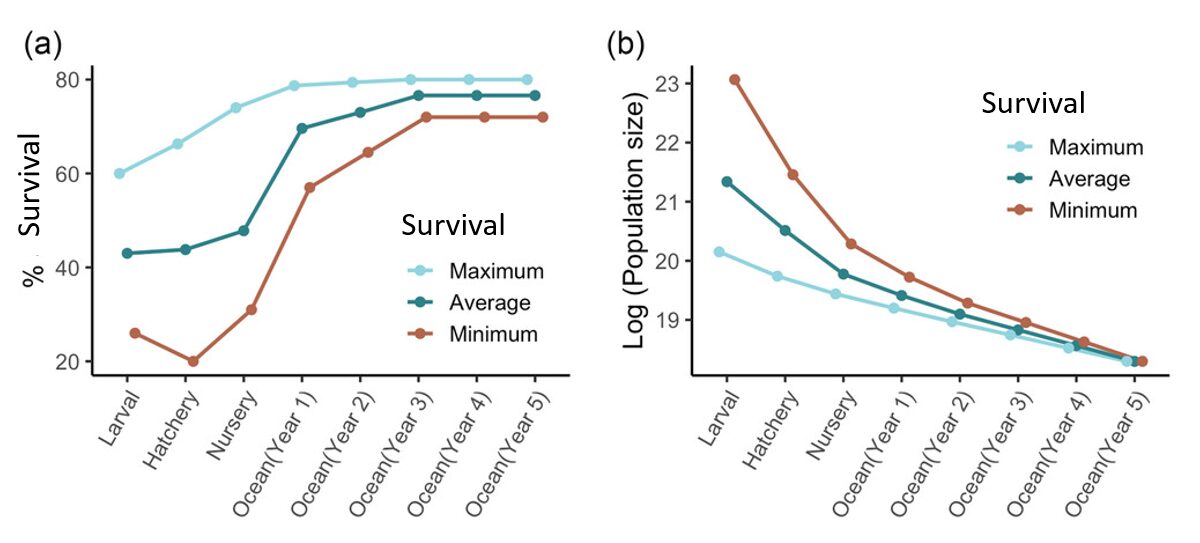
Across all shellfish species produced regionally (oysters, clams and scallops), there are 28 commercial or municipal shellfish hatcheries and nurseries and four focused on research in the Mid-Atlantic (New York to Virginia). Expanding this region to include New England, there are 37 commercial or municipal and seven research hatcheries and nurseries. Many of these hatcheries and nurseries have relatively small capacity, supporting only single farms or a handful of farms. The level of effort estimated in this study therefore represents a considerable expansion of the contemporary hatchery and nursery production in the region. Given that this study considers this capacity to be dedicated to only one species, this represents a substantive undertaking relative to what already exists.
Several important caveats must be acknowledged when considering the results of this study. One is the cost of land acquisition and permitting was not included as these costs would vary considerably based on where a facility is located and therefore could not be reliably estimated. In addition, transportation costs between hatchery and nursery facilities were not reported. These costs were assumed to be minimal as shellfish hatcheries in the region are frequently located proximally to nurseries.
Another is that the costs of planting seed in the ocean were not determined, and variations could result in substantially different costs. Likewise, the costs and efficiencies associated with collecting (fishing for) market-size surf clams following grow-out were also not included yet it is understood that a dredge is not 100 percent efficient at catching clams. Thus, if a commercial vessel were to be used to collect (fish) the clams at the end of the grow-out phase, it can be assumed that either the costs to recover all the clams planted would exceed typical fishing costs or some portion of the planted clams would remain in the ocean and not be caught.
Additionally, any incidental mortality incurred during the collection of the clams was not applied in our calculation, and depending on the collection method, this might result in losses that warrant review. Co-production of multiple bivalve species was not considered but is common in shellfish hatcheries. If co-production was included here, it should be expected to increase costs, reduce surf clam output or, likely, both. These limitations are potential areas for future research. The results presented here should therefore be regarded as a lower bound of the true costs of hatchery-supported stock enhancement for the Atlantic surf clam.
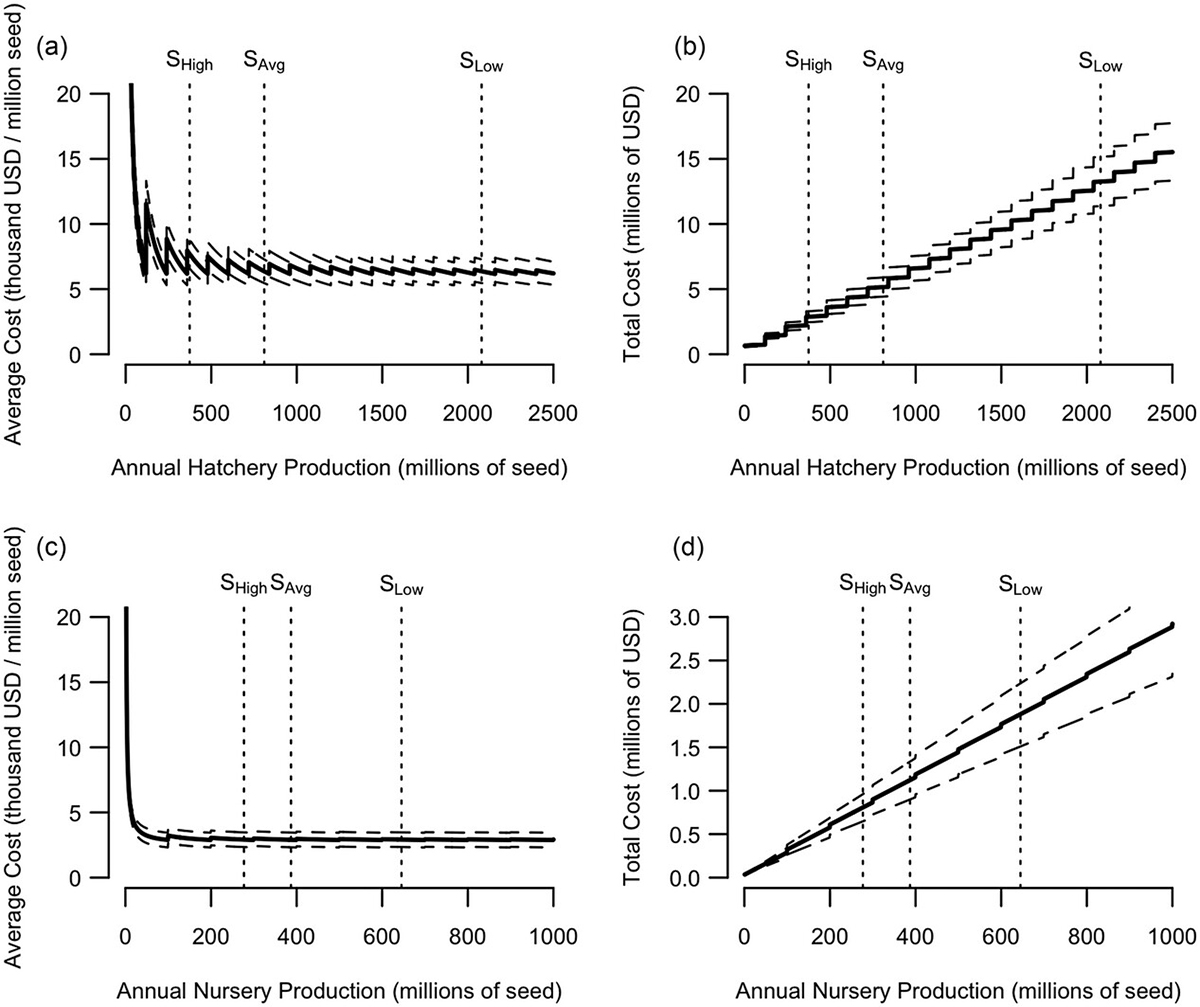
Despite the wide use of hatchery-supported stock enhancement by national, state and local governments, ocean ranching has not commonly found private commercial success due to low recovery rates, capital intensity, market conditions and resource access rights. Although many stock enhancement programs have been found to be economically unsustainable, examples of net beneficial stock enhancement programs do exist, and the economic impacts of hatchery-supported production can be substantial. Whether stock enhancement is beneficial or not is still an open question in the world of seafood production. More studies are needed to assess the viability of large-scale enhancement efforts to compare costs and benefits and the expected returns regarding survival rates to determine the efficacy of enhancement.
Perspectives
In estimating maximum and minimum survival in hatchery, nursery and ocean conditions, reports of zero survival were excluded. The literature often fails to report the circumstances of hatchery and nursery failures, and it is not well known how frequently such events may occur.
Increasing the number of hatcheries and nurseries used in production could reduce the risk of total failure across locations, though this would come with increased costs. As our estimates include a minimum, non-zero, survival assumption each year as a worst-case scenario, survival may be overestimated and thus costs underestimated.
However, although hatchery and nursery costs substantially increase across the survival scenarios, cost variability within a particular survival scenario is relatively less impactful. This indicates that economic viability depends considerably on survival rates at different production stages. Additional research is needed to better understand the drivers of hatchery and nursery failures and how large-scale shellfish aquaculture production can hedge against these risks.
This study provides insight into the viability of fishery-scale enhancement efforts for Atlantic surf clam and is an important step towards estimating how enhancement efforts can be accomplished at a large scale with impactful results. Similar approaches to this research may be considered in other contexts for various fishing sectors to expand future research where enhancement efforts may be beneficial for economic or conservation targets.
Now that you've reached the end of the article ...
… please consider supporting GSA’s mission to advance responsible seafood practices through education, advocacy and third-party assurances. The Advocate aims to document the evolution of responsible seafood practices and share the expansive knowledge of our vast network of contributors.
By becoming a Global Seafood Alliance member, you’re ensuring that all of the pre-competitive work we do through member benefits, resources and events can continue. Individual membership costs just $50 a year.
Not a GSA member? Join us.
Author
-
Caela B. Gilsinan
Corresponding author
Virginia Institute of Marine Science, William & Mary, Gloucester Point, Virginia, USA



